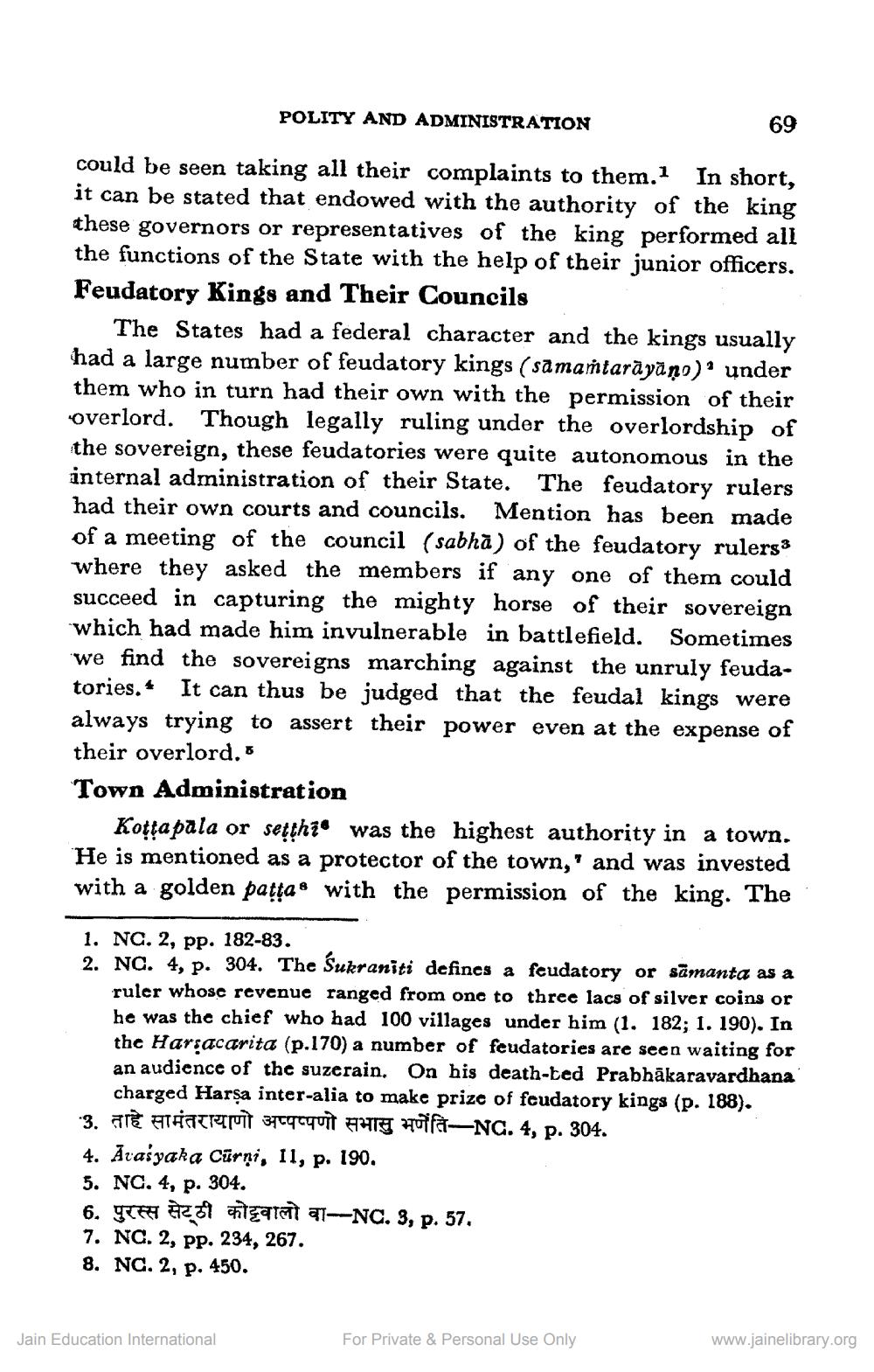________________
POLITY AND ADMINISTRATION
69
could be seen taking all their complaints to them. In short, it can be stated that endowed with the authority of the king these governors or representatives of the king performed all the functions of the State with the help of their junior officers. Feudatory Kings and Their Councils
The States had a federal character and the kings usually had a large number of feudatory kings (samaṁtarāyāno): under them who in turn had their own with the permission of their overlord. Though legally ruling under the overlordship of the sovereign, these feudatories were quite autonomous in the internal administration of their State. The feudatory rulers had their own courts and councils. Mention has been made of a meeting of the council (sabha) of the feudatory rulers3 where they asked the members if any one of them could succeed in capturing the mighty horse of their sovereign which had made him invulnerable in battlefield. Sometimes we find the sovereigns marching against the unruly feudatories.* It can thus be judged that the feudal kings were always trying to assert their power even at the expense of their overlord. Town Administration
Kottapala or setthz“ was the highest authority in a town. He is mentioned as a protector of the town,' and was invested with a golden patta® with the permission of the king. The
1. NC. 2, pp. 182-83. 2. NO. 4, p. 304. The Sukraniti defines a feudatory or sämanta as a
ruler whosc revenue ranged from one to three lacs of silver coins or he was the chief who had 100 villages under him (1. 182; 1. 190). In the Harsacarita (p.170) a number of feudatories are seen waiting for an audience of the suzerain. On his death-ted Prabhākaravardhana
charged Harsa inter-alia to make prize of feudatory kings (p. 188). 3. JE FATHERM 3969cquit Auto Hifa-NC. 4, p. 304. 4. Avašyaka Cūrņi, 11, p. 190. 5. NC. 4, p. 304. 6. OCET ZDI 21—-NC. 3, p. 57. 7. NC. 2, pp. 234, 267. 8. NC. 2, p. 450.
Jain Education International
For Private & Personal Use Only
www.jainelibrary.org




